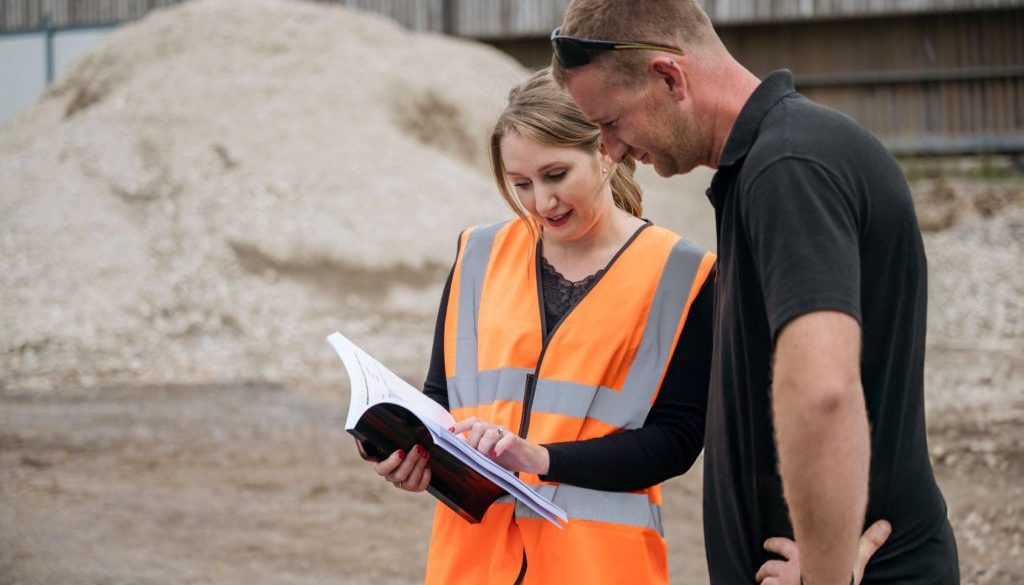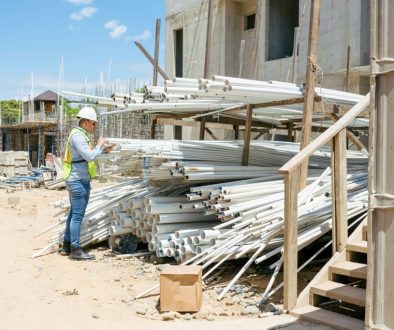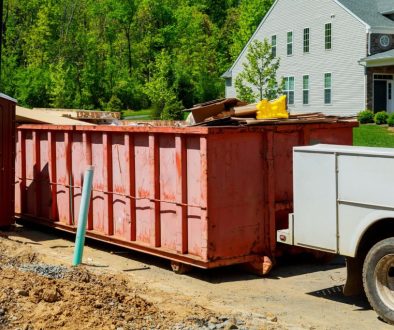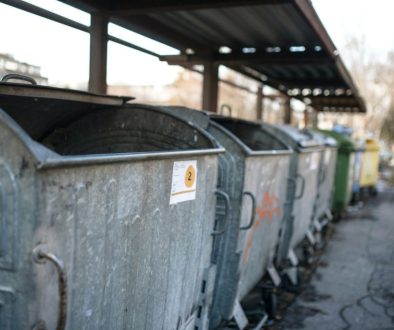Recycled aggregates are becoming more common across many types of projects, from large construction jobs to smaller landscaping work. Whether you’re fixing up a driveway or working on a new build, knowing what goes into quality recycled aggregate can save you time, frustration, and money. The better the material, the better it will perform over time.
Picking the right kind matters. If it’s low grade or full of leftover rubble and dirt, it probably won’t hold up well under pressure or might not bond properly. On the other hand, strong, clean, well-sized recycled aggregate can offer a long-lasting, more sustainable alternative to new quarried materials. Let’s have a look at what recycled aggregate actually is, and what you should look out for if you’re planning a project in Cheshire.
What Is Recycled Aggregate?
Recycled aggregate is made by processing old construction materials, often things like demolished buildings, roadwork, or other concrete-heavy jobs. Instead of letting that material go to a landfill, it’s crushed, cleaned, and filtered to create usable products again. That could be anything from crushed brick and concrete to bits of asphalt.
Some of the most common sources of recycled aggregate include:
– Demolition concrete: often used from patios, footings, and building structures
– Crushed bricks: useful for decorative paths or backfill
– Asphalt chunks: Chunks from old roads or car parks
– Mixed rubble: sorted to remove wood, plaster, and other waste
The result is a product that looks like crushed stone or gravel but with a more environmentally friendly history.
It’s not just about reuse though. When processed the right way, recycled aggregate meets regular building and engineering project needs. It can be used under pavements, in foundations, or even in decorative external finishes. But that quality all depends on how the material is handled.
Characteristics of Good Quality Recycled Aggregate
Not all recycled materials are created equal. Some are carelessly processed and contain too much dust, leftover bits of metal, or general rubbish. Good quality recycled aggregate stands out for a few reasons. It’s clean, durable, and consistent. If anything feels off, it probably isn’t the right fit for your project.
Here’s what to look for:
1. Cleanliness
Avoid aggregates with bits of wood, plastic, paper, or soil mixed in. These can weaken your project and affect water movement. A clean aggregate not only looks better but works better when compacted or mixed with other materials.
2. Consistent size
Whether you’re using it for a sub-base or a decorative layer, the pieces should be a similar size. Mixed, uneven chunks usually don’t settle well and can create gaps or weak spots.
3. No strong smells
It may sound odd, but if the material smells like fuel, paint, or chemicals, there’s likely some form of contamination.
4. Strength
High-quality recycled aggregate holds up under pressure just like quarried stone. It shouldn’t crumble in your hand or turn to dust when moved around on site.
5. Low water absorption
Aggregates that hold too much water can throw off a concrete mix or affect how the surface sets. A good one stays firm and stable, even in wet weather.
If you’re ever unsure, trust your senses. If it looks dirty, loose, or mixed with odd materials, it’s probably not right for the job. But if it’s even in size, feels solid, and looks clean, chances are you’ve found a decent batch.
Benefits of Using High-Quality Recycled Aggregate
Choosing high-quality recycled aggregate isn’t just about strength and stability. There are added benefits that can make a real difference across different kinds of construction or landscaping jobs. While recycled materials may have once been seen as a compromise, better processing methods and rising demand have changed all that.
One of the standout reasons for using recycled aggregate is the environmental benefit. Reusing materials reduces the need for quarrying and mining activity. That means fewer lorries on the road, less disruption to natural areas, and a smaller carbon footprint all round. It also helps keep more waste out of landfills, which is important in places like Cheshire where both urban and rural areas share the space.
There’s a financial edge too. Recycled aggregate often costs less compared to freshly quarried stone, especially when bought in bulk. That cost saving can be significant if you’re working on a larger site or public surface like a school car park.
Then there’s the practical side. High-grade recycled materials are more than capable of performing well under use. Good aggregates are highly versatile and can be used for:
– Sub-bases under driveways, patios, and footpaths
– Filling holes or replacing uneven ground levels
– Backfill for drainage and retaining walls
– Mixing into concrete (as long as it’s graded appropriately)
When processed properly, recycled aggregate delivers similar results to virgin materials. In some cases, like surface drainage or low-impact landscaping, they’re considered even better due to their slightly porous nature.
How to Ensure You’re Getting Good Quality Recycled Aggregate
When it comes to sourcing, the origin matters as much as the product. Just because something’s labelled as recycled doesn’t mean it’ll work well for your needs. Here are a few things you can do to make sure you’re getting a product that’s worth the spend.
1. Check the supplier’s record
Established suppliers usually summarise how they sort, clean, and grade their stock. If they’re vague or brush your questions aside, it might be a sign to look elsewhere.
2. Ask for test results
A reliable supplier will be happy to show proof of tests done on strength, contamination levels, and how the mix holds up. Most recycled aggregates go through this kind of routine check.
3. Take a look at the stockpile
If you can, visit the supplier’s yard. High-quality aggregate should look uniform, clean, and free from unwanted bits like plaster or plastic.
4. Request a small sample
This gives you a sense of the texture, colour, and mix quality. Give it a feel in your hand. If it’s too dusty, tickly with fibres, or full of debris, steer clear.
5. Watch for crumbling
Good recycled aggregate should be robust. If you find you can crush it easily, it won’t hold up when used under traffic or heavy weight.
These checks don’t take long but can prevent major issues later. They also help you plan better since you’ll know exactly what kind of performance to expect.
Why It Pays to Prioritise Quality
Recycled doesn’t need to mean second-rate. When handled correctly, former building materials can be every bit as reliable and solid as their freshly quarried counterparts. You get structure, performance, and savings all in one mix.
On the flip side, lower quality recycled aggregates can cause more trouble than they’re worth. Weak mixes can slow your job, damage equipment, and need to be replaced sooner than expected. For anything where structure or drainage is key, paying attention to quality brings peace of mind and decent results.
It doesn’t matter if you’re styling up a new footpath or preparing a base for a heavy-duty surface like a driveway. A good foundation always starts with good aggregate. Choosing a recycled option gives the bonus of helping the environment while keeping costs in check, which is a win on both ends.
What To Keep In Mind for Your Next Project
Recycled aggregate carries lots of benefits, from reducing disposal needs to giving older material new life on your site. But while it’s a good option, it works best when chosen with care. With a little checking, you can get something that performs well without paying the price of brand-new stone.
Anyone in Cheshire looking at construction or landscaping projects should keep a close eye on the materials they select. Whether it’s for a garden path, private drive, or bigger public project, knowing the ins and outs of good recycled aggregate gives you a solid starting point.
Take time to test, check, and trust your supplier. When you pair that with reliable waste services, the whole process becomes more efficient and cost-effective. Whether you’re doing something small-scale or tackling a bigger build, the right kind of aggregate will make a real difference.
For any projects in Cheshire involving recycled aggregates or waste management, Enviro Skip Hire is ready to help. Our services ensure that your materials are handled properly and efficiently. If you’re planning a large cleanout or construction job, it might be the right time to hire an open skip to keep waste under control. Let us help keep your project running smoothly from start to finish.




